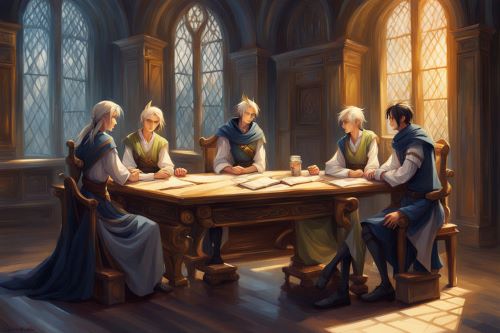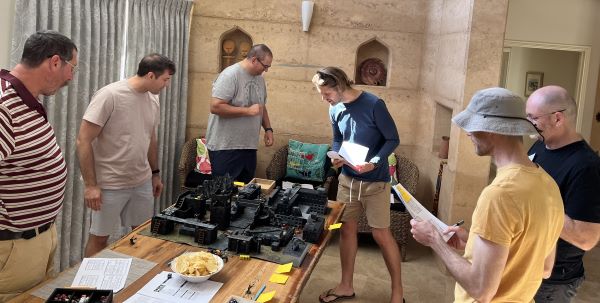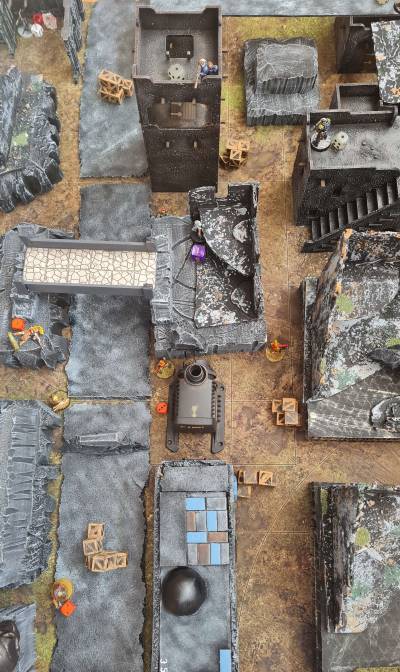In leadership, a nuanced concept often overlooked is Leadership Capital—a currency comprising the intangible assets accrued through actions, decisions, and interactions. Drawing parallels from the social aspects of Dungeons & Dragons (D&D), we delve into the strategies for accumulating and depleting Leadership Capital, offering insights into effective leadership.
What is Leadership Capital?
Leadership Capital refers to the collective resources, credibility, influence, and goodwill that a leader accrues over time. It is accrued specifically through the leaders actions, decisions, and interactions with others. It encompasses a leader’s reputation, trustworthiness, expertise, and ability to inspire and motivate others. While seemingly intangible, Leadership Capital enables a leader to effectively lead and influence their team by leveraging their credibility and trust to implement change, make tough decisions, and achieve organizational goals. Effective leaders continuously invest in and nurture this concept through consistent and ethical leadership practices, transparent communication, and building strong relationships with stakeholders.
Actions and Decisions: The Currency of Leadership
In D&D, every action and decision shapes the trajectory of the adventurers’ journey. Additionally, they also shape the campaign world and the working relationships with the other characters. Imagine the Cleric who tries to keep all the magical loot for themselves. After a while this behavior wears thin with the rest of the party and when said Cleric reaches out for help, it may well not be forthcoming.
Similarly in the workforce, leaders accumulate Leadership Capital through decisive actions and thoughtful decisions. Acts of courage, strategic maneuvers, and ethical choices yield dividends in the form of increased trust and respect from followers. Conversely, reckless decisions or betrayals significantly erode your count, diminishing influence and credibility.
Quests and Challenges: Opportunities for Growth
A large part of joy in the game, quests and challenges are opportunities for adventurers to demonstrate their prowess and accrue valuable rewards. If each character plays their part in overcoming the evil villain they gain Leadership Capital with each other. As such, theywill work more closely as a team moving forward.
Likewise, leaders thrive when facing formidable challenges head-on. Successfully navigating crises, overcoming obstacles, and achieving milestones contribute to the accumulation of Leadership Capital. Each triumph reinforces trust and confidence in the leader’s abilities.
Alignment and Integrity: Upholding Principles
Alignment in D&D reflects a character’s moral compass and ethical principles. While it can be fun to play chaotic or morally ambiguous characters on occasion, consistently playing with a lack of integrity loses Leadership Capital very quickly. Do you always try to steal the treasure ahead of other players, or perhaps the character always tries to kill first and ask questions later. Wanting to hog the spotlight also has a negative impact. This very one-sided approach to the game results in other players disgruntlement as well as pushback reactions from the DM. If not handled carefully it can completely derail the game for everyone.
Of course, leaders uphold their integrity as a cornerstone of Leadership Capital. Consistent adherence to principles, transparency in decision-making, and alignment of actions with values foster trust and credibility. Leaders who stray from their moral compass risk depleting their Leadership Capital, as trust erodes in the face of inconsistency or duplicity.

NPC Interactions: Influence and Diplomacy
Non-player characters (NPCs) in D&D provide opportunities for interaction, negotiation, and diplomacy. During play characters gain and lose Leadership Capital through their interactions with them. Good DMs keep a rough track of this concept held by different NPCs and can quickly gauge their reactions to the characters in game. Getting help from the city Mage with a low Leadership Capital count is going to be very difficult indeed. Conversely, asking the gang of rogues who your party have provided work and a safe place to live will get a more positive response.
Effective leaders master the art of interpersonal relationships, leveraging influence and diplomacy to build alliances and garner support. Skillful negotiation, active listening, and empathy increase Leadership Capital by fostering trust and collaboration. Conversely, abrasive interactions or broken promises diminish this valuable resource.
Critical Hits and Failures: Impactful Moments
In D&D, critical hits and failures have profound consequences, altering the course of the adventure and in some cases even the long term campaign. This often form milestones and touchpoints for the journey of the players, their characters and the party.
Additionally, impactful moments define a leader’s legacy and influence Leadership Capital. Successfully navigating crises, seizing opportunities, or inspiring breakthroughs amplify this concept. Conversely, catastrophic failures or ethical lapses inflict significant damage, eroding trust and credibility.
Final thoughts
In the tapestry of leadership, the accumulation and depletion of Leadership Capital shape the trajectory of a leader’s journey. By understanding the mechanics of gaining and losing this invaluable resource—drawing parallels from the intricate dynamics of Dungeons & Dragons—leaders can embark on a quest for greatness, inspiring others to join them on the path to success.





